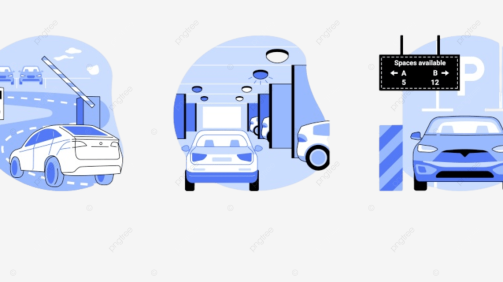During the COVID-19 pandemic, I led the development of a telemedicine platform, it was designed to facilitate remote consultations, medical advice, prescription management, and appointment scheduling for healthcare providers and patients, enabling continuity of care while adhering to social distancing guidelines. Here’s an overview of the system and its key features:
Key Features:
- Virtual Consultations: It enabled healthcare providers to conduct virtual consultations with patients via secure video calls, allowing for real-time communication, assessment of symptoms, and provision of medical advice.
- Secure Messaging: The platform included secure messaging capabilities that allowed healthcare providers and patients to communicate asynchronously, exchange medical information, discuss treatment plans, and address follow-up questions or concerns.
- Electronic Prescriptions: It was integrated with electronic prescribing systems to enable healthcare providers to electronically send prescriptions to patients’ preferred pharmacies, reducing the need for in-person visits and minimizing potential exposure to COVID-19.
- Appointment Scheduling: The platform offered appointment scheduling functionality that allowed patients to book virtual appointments with healthcare providers at their convenience, view available time slots, and receive reminders via email or SMS.
- Document Sharing and Management: It provided a centralized repository for storing and managing patient health records, medical history, diagnostic reports, and treatment plans, ensuring easy access to relevant information during virtual consultations.
- HIPAA Compliance: The platform was designed to comply with HIPAA (Health Insurance Portability and Accountability Act) regulations and standards for protecting patient privacy and confidentiality. Robust security measures, including encryption, access controls, and audit trails, were implemented to safeguard patient data.
- Customizable Telehealth Workflows: It offered customizable telehealth workflows and templates that allowed healthcare providers to tailor the virtual consultation experience to their specialty, practice preferences, and patient populations.
- Integration with EHR Systems: The platform seamlessly integrated with electronic health record (EHR) systems used by healthcare providers, enabling bidirectional data exchange and synchronization of patient information between the platform and the provider’s existing clinical systems.
- Patient Engagement Tools: It included patient engagement features such as automated appointment reminders, medication adherence alerts, and health education resources to empower patients to take an active role in managing their health.
Why this system was valuable?:
During the COVID-19 pandemic, it played a crucial role in enabling healthcare providers to deliver continuous care and support to patients while minimizing the risk of virus transmission. By offering secure and convenient virtual consultations, electronic prescriptions, and appointment scheduling capabilities, it helped healthcare organizations:
- Ensure continuity of care for patients with chronic conditions, acute illnesses, and preventive healthcare needs.
- Expand access to medical services for patients in underserved or remote areas with limited access to traditional healthcare facilities.
- Reduce the burden on healthcare systems and emergency departments by providing an alternative to in-person visits for non-emergent medical issues.
- Enhance patient satisfaction and engagement by offering flexible and convenient telehealth options that fit patients’ preferences and lifestyles.
As the product manager, I collaborated with cross-functional teams of software engineers, UX/UI designers, healthcare professionals, and compliance experts to develop a user-centric and regulatory-compliant telemedicine platform that met the evolving needs of healthcare providers and patients during the pandemic. By leveraging technology and innovation, it helped transform the delivery of healthcare services and improve patient outcomes in the midst of a global health crisis.
Tech Stack Used:
Building this system required a robust and scalable tech stack to support real-time video communication, secure data transmission, electronic prescribing, appointment scheduling, and integration with electronic health record (EHR) systems.
Frontend Development:
- Programming Languages: HTML5, CSS3, and JavaScript were used for frontend development to create responsive and interactive user interfaces.
- React.js: React.js, a JavaScript library for building user interfaces, was utilized to develop the frontend components and ensure a seamless user experience across different devices and browsers.
- Redux: Redux, a predictable state container for JavaScript apps, was employed to manage application state and handle complex data interactions within the frontend.
Backend Development:
- Programming Language: Node.js was chosen as the primary backend programming language for its event-driven architecture, non-blocking I/O model, and scalability.
- Express.js: Express.js, a web application framework for Node.js, was used to build the backend RESTful API for handling requests, routing, and middleware integration.
- Socket.IO: Socket.IO was employed for real-time bidirectional communication between clients and servers, enabling secure and low-latency video conferencing capabilities.
Database:
- MongoDB: MongoDB, a NoSQL database, was used for storing patient data, user profiles, appointment schedules, and other application-related information. MongoDB’s flexibility, scalability, and document-oriented data model were well-suited for handling unstructured healthcare data.
- Mongoose: Mongoose, an object data modeling (ODM) library for MongoDB, facilitated schema-based modeling and validation of data structures, ensuring consistency and integrity of the database.
Video Conferencing and Communication:
- WebRTC (Web Real-Time Communication): WebRTC technology was employed for real-time video conferencing and peer-to-peer communication between healthcare providers and patients directly in the web browser.
- Twilio Video API: Twilio Video API was integrated to enhance WebRTC capabilities, provide multi-party video conferencing, and ensure scalability and reliability of video communication.
Security and Compliance:
- JSON Web Tokens (JWT): JWT tokens were used for authentication and authorization, ensuring secure access to protected resources and APIs within the application.
- SSL/TLS Encryption: SSL/TLS encryption was implemented to secure data transmission and communications between clients and servers, protecting patient data privacy and confidentiality.
- HIPAA Compliance Measures: MediConnect Telehealth adhered to HIPAA (Health Insurance Portability and Accountability Act) compliance requirements for protecting patient health information (PHI), including encryption, access controls, audit trails, and data encryption at rest and in transit.
Cloud Services and Deployment:
- Amazon Web Services (AWS): AWS was chosen for cloud hosting, infrastructure management, and scalable computing resources. Services such as EC2 for virtual servers, S3 for object storage, and CloudFront for content delivery were used to deploy and operate MediConnect Telehealth in the cloud.
- Docker and Kubernetes: Docker containers and Kubernetes orchestration were employed for containerization, deployment, and management of microservices in a scalable and resilient manner. Docker and Kubernetes offered portability, scalability, and automated deployment.
By leveraging this tech stack, we were able to deliver a secure, reliable, and user-friendly telemedicine platform that facilitated remote consultations, prescription management, and appointment scheduling for healthcare providers and patients. The combination of frontend and backend technologies, real-time communication capabilities, data security measures, and integration with healthcare systems ensured the optimal performance and compliance of the system in facilitating remote healthcare delivery.




